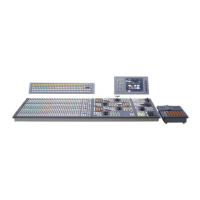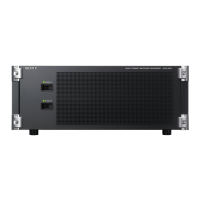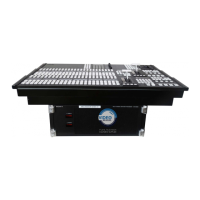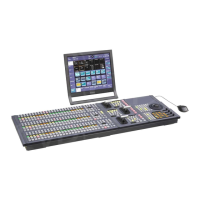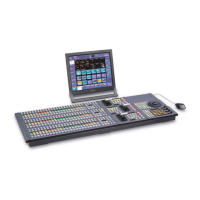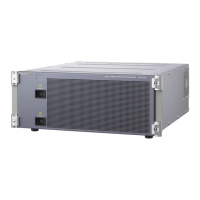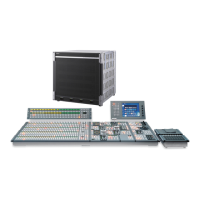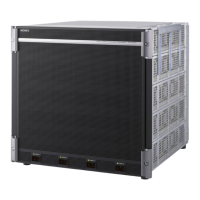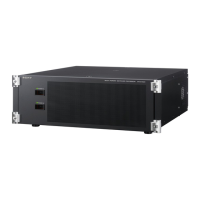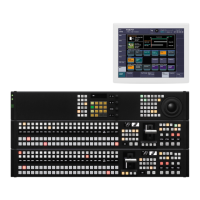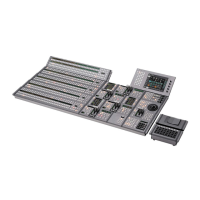25
Creation of Special Effects and Management of Data and Operations
Chapter 1 MVS-8000X/7000X Functions
External Devices
In this system, you can operate while controlling the
following types of external device:
• Devices supporting P-Bus (Peripheral II protocol)
• Devices supporting GPI
•VTRs
• Disk recorder (Sony disk 9-pin protocol and video disk
communications protocol)
• Extended VTR (Abekas A53 protocol)
For details on the devices that can be connected, consult
your Sony representative.
You can control an external device by previously
registering timeline keyframes.
For details, see Chapter 12 “External Devices” (Volume
2).
Keyframes
A keyframe represents an instantaneous state of an image;
it can be saved in a register and recalled for reuse.
By arranging a number of keyframes on the time axis, and
interpolating between successive keyframes, you can
create a “keyframe effect” in which there is a continuous
change from each keyframe to the next.
The following figure shows three keyframes created with
a wipe pattern (the circle) in different positions. This is
interpolated to create the effect shown.
Example of keyframes and effect execution
You can save the sequence of keyframes representing a
single effect in a register. Then by recalling this register,
you can replay the same effect.
For details, see Chapter 13 “Keyframe Effects” (Volume
2).
Snapshots
The term “snapshot” refers to a function whereby the
various settings required to apply a particular effect to an
image are saved in a register as a set of data, for recall as
required, to recover the original state.
Snapshots are divided as follows.
• Snapshots applying to a particular region (functional
block of the switcher or DME)
• Master snapshot
• Key snapshot
• Wipe snapshot
• DME wipe snapshot
An individual snapshot may also have attached special
conditions relating to switcher or DME operation when the
snapshot is recalled.
These conditions are called “attributes” of the snapshot,
and can be added when the snapshot is saved or recalled.
For details, see Chapter 14 “Snapshots” (Volume 2).
Utility
The utility function refers to a function whereby you can
assign an arbitrary action or a shortcut for frequently used
menu to a particular button, then instantly recall the action
or menu by pressing the button.
For details, see “Utility Execution” in Chapter 15
(Volume 2).
Shotbox
The term “shotbox” refers to a function whereby for each
specified region (see “Regions” in Chapter 13 (Volume 2))
any snapshot or keyframe effect can be recalled
simultaneously.
For details, see “Shotbox” in Chapter 15 (Volume 2).
Macros
The term “macro” refers to the function whereby a
sequence of signal selections and other operations on the
control panel is saved as data in memory (macro register),
so that it can be recalled as required to automatically
execute the same sequence of operations.
The individual control panel operations constituting a
macro are termed “events.”
Macros also provide the following functions.
Background A
Background B
Interpolated images
Keyframe 1 Keyframe 2 Keyframe 3
Effect execution

